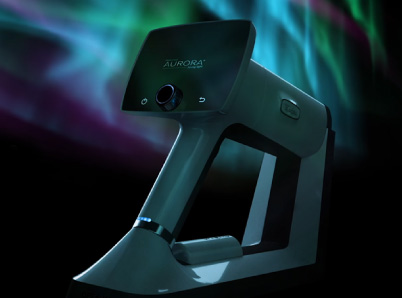Physicians endeavor to provide the best care possible for their patients and prevent complications whenever possible. Diabetes is a widespread disease, and complications such as vision loss are incredibly impactful on diabetics, their families, and society as a whole.
Vision loss from diabetic retinopathy affects a significant percentage of people with diabetes, although it is highly treatable with timely intervention, which in turn, relies on routine eye screenings because there are generally no noticeable symptoms until vision is irreversibly lost.
Preserving Diabetics’ Vision Starts with the Right Technology
Primary care physicians understand the importance of routine screenings for diabetic retinopathy yet have been somewhat limited by available technology to do much more than encourage their patients’ participation.
The direct ophthalmoscope is difficult to use and inefficient at identifying signs of diabetic retinopathy. Tabletop retinal cameras are bulky, expensive, and require extensive training, so they are generally not feasible to include in a PCP office. Patients must then be referred to an ophthalmologist for routine screening. However, non-compliance rates with these referrals are high.
Physicians have lacked a real alternative, in large part because they don’t have practical tools. However, over the past twenty years, technology has been advancing in this area. Today’s mobile handheld fundus cameras are easy to use, produce high-quality images, and are easily attainable. They are also cost-effective enough that they make sense to include in the PCP’s in-office toolkit.
By screening for signs of diabetic retinopathy in the PCP’s office, most of the barriers to compliance are addressed and screening rates increase. With improved screening rates, vision loss can be prevented for countless diabetic patients.
Diabetic Retinopathic Vision Loss: Preventable yet Prevalent
Diabetic retinopathy is one of the foremost causes of preventable vision loss in the United States and worldwide. The statistics are sobering:
- Diabetic retinopathy affects one in three diabetics, with about one in ten experiencing vision loss due to the condition.
- Three in four diabetics show some sign of diabetic retinopathy within ten years of diagnosis.
- Nine in ten cases of vision loss due to diabetes can be prevented with timely treatment. Since there are no noticeable symptoms, timely treatment depends on early screening and intervention.
- Six in ten diabetics do not comply with recommended eye exams.
Why is compliance with recommended screening so low, when vision loss due to diabetic retinopathy is so prevalent and serious—and treatable? Scientists have researched this question extensively.
Although specific barriers vary somewhat from one region to another, major barriers to screening include lack of education and time and poor access to screening facilities. With improved education and access—including mobile telescreening and eye screening accomplished by PCPs—screening rates go up.
Technological Advances in the Mobile Handheld Fundus Camera
The technology used in mobile handheld fundus cameras has advanced significantly over the past several decades, which has changed the landscape of diabetic retinopathy screening. No longer are options limited to using the direct ophthalmoscope or relying on specialists for routine screenings. With a focus on ease of use and high-quality retinal pictures, mobile handheld fundus photography provides a true alternative in the detection of diabetic retinopathy.
For example, Finnish medical technology pioneer Optomed has the Aurora, which provides high-quality retinal pictures with a minimal learning curve. The technology is designed to maximize image quality and ease of use with features such as autofocus, auto-exposure, and a contrast-enhancing filter. These features ensure that even non-eye-care specialists—including PCPs or their paraprofessional staff—can easily, quickly, and reliably capture high-quality retinal pictures. Its fifty-degree field of view is optimal for the detection of diabetic retinopathy.
These images can help PCPs detect early changes in the retina that can indicate a need for specialist examination, and the details can easily be shared with ophthalmology remotely for consultation.
Since the Optomed Aurora is mobile, it can be taken between rooms or wherever the patient may be. The imaging can be accomplished in minutes by non-eye-care specialists, so it can be incorporated into any PCP appointment or routine wellness visit. Patients aren’t burdened with the challenges of pupil dilation because the device is non-mydriatic. They no longer need to arrange an additional appointment just for a screening, and barriers including lack of time or inadequate access to screening facilities drop away.
PCPs Can Make a Real Difference Right from Their Own Office
Physicians strive to provide the best care for their patients and prevent complications whenever possible. PCPs have been urging people with diabetes to comply with screening recommendations for the sake of preserving their vision, but screening rates remain too low, leading to unnecessary vision loss.
However, with today’s technology, physicians have another option. They can now screen for signs of diabetic retinopathy right in their own offices. This can make a real difference in the fight to save the vision of their patients and to close this gap in diabetic care. The solution is cost-effective, realistic, and attainable.
Here at Optomed, our mission is to help save the vision of millions of people. By integrating our software and artificial intelligence solutions with our camera, we enable eye screening for everyone, wherever they are. To see how we can equip you to save the sight of more patients, schedule a free consultation today!



